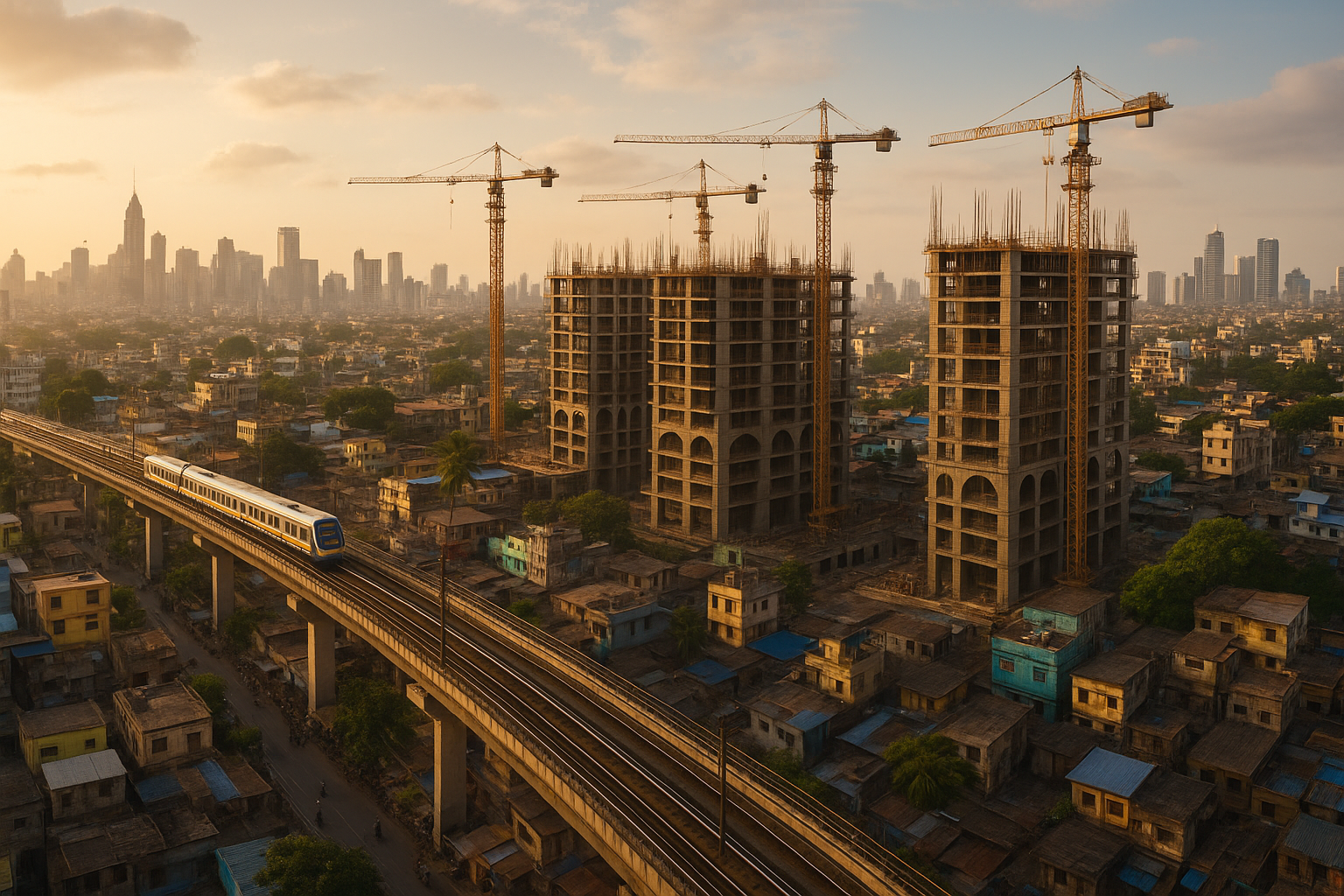South Asia’s Economy Booms, but World Bank Warns of Deep Structural Challenges
The World Bank’s South Asia Development Update projects the region to remain the world’s fastest-growing, driven by India’s strong performance, but warns that fiscal stress, weak private investment, and climate risks threaten long-term stability. It calls for deeper reforms to turn resilience into inclusive and sustainable growth.

The World Bank’s latest South Asia Development Update, developed by its South Asia Economic Policy Unit and the Development Research Group, paints a vivid picture of a region powering ahead yet weighed down by structural fragilities. With India driving much of the momentum, South Asia remains the world’s fastest-growing region, projected to expand by around 6 percent in 2024. But beneath this headline figure lies a story of divergence: India’s resilience contrasts sharply with the economic strain facing Pakistan, Sri Lanka, Bangladesh, and Nepal.
The report commends the region’s recovery from multiple shocks, the pandemic, the Ukraine war, and global financial tightening, but warns that growth remains uneven and fragile. “South Asia continues to outperform most emerging markets, yet the gaps within the region are widening,” the World Bank cautions, calling for deeper reforms to sustain progress.
India: The Region’s Growth Powerhouse
India stands out as South Asia’s economic anchor, its public infrastructure push, digital transformation, and resilient domestic demand keeping growth on track even as global conditions remain uncertain. Flagship programs such as Make in India and PM Gati Shakti have catalyzed investment and industrial output, especially in construction and manufacturing.
The World Bank highlights India’s Digital Public Infrastructure (DPI), anchored in Aadhaar, UPI, and Jan Dhan accounts, as a global model for inclusive growth. By linking identity, banking, and digital payments, the DPI has expanded financial access for millions and boosted productivity. Yet, challenges persist. Female labor participation remains one of the lowest in the world, and rural productivity lags behind urban growth. The report stresses that India’s next phase must turn macroeconomic stability into broad-based, job-rich growth that lifts incomes across sectors and regions.
Inflation, Debt, and the Fiscal Balancing Act
Across South Asia, inflation is easing but remains stubbornly above target, fueled by lingering supply disruptions, rising energy costs, and currency pressures. Fiscal deficits have narrowed yet still weigh heavily on government budgets. The World Bank points out that energy subsidies, import dependency, and weak tax collection continue to strain public finances.
Pakistan and Sri Lanka, under IMF-supported programs, have made progress in restoring external balance but at considerable social cost. Both nations face high inflation and sluggish job recovery, while austerity measures have hit household incomes. Bangladesh, though maintaining steady growth, remains vulnerable due to its reliance on garment exports and limited diversification. Nepal’s economy, meanwhile, continues to depend heavily on remittances rather than productive investment.
The report warns that without prudent fiscal management and credible reform, public debt could undermine stability across several South Asian economies.
The Missing Engine: Private Investment
Despite robust public spending, the report underscores a worrying stagnation in private investment, calling it the “missing engine” of South Asia’s growth story. Investment-to-GDP ratios have plateaued across most economies, and in some cases declined. The World Bank attributes this to policy uncertainty, underdeveloped capital markets, and slow structural reforms.
While public infrastructure has expanded rapidly, it has not yet crowded in private enterprise. The report emphasizes that job creation and productivity depend on unlocking private sector confidence through transparent regulations, efficient logistics, and a competitive business environment. Without this, South Asia risks high growth but low transformation, a pattern that leaves millions underemployed despite rising GDP.
Climate Risks and the Road Ahead
The South Asia Development Update devotes an entire section to the climate crisis, calling it the “defining threat” to the region’s future. South Asia, home to nearly a quarter of the world’s population, faces intensifying floods, heat waves, and shifting monsoon patterns. Maps in the report highlight climate hotspots across India, Bangladesh, and Pakistan, where extreme weather is already eroding livelihoods.
The World Bank urges governments to accelerate renewable energy adoption, phase out inefficient subsidies, and integrate climate risk into fiscal and investment planning. It also calls for greater regional cooperation in energy trade, especially hydropower, and cross-border adaptation strategies. The economic costs of inaction, the report warns, will far exceed those of preventive investment.
A Region of Promise and Paradox
Despite the turbulence, the report remains cautiously hopeful. With its young population, digital capabilities, and strategic location, South Asia could contribute nearly one-third of global growth by 2030, if it sustains reform momentum and boosts productivity. Yet, deep-rooted issues, inequality, education gaps, and gender exclusion threaten to blunt that potential.
The World Bank concludes that South Asia’s resilience is proven, but resilience alone is not enough. The challenge now is transformation: turning growth into prosperity that is inclusive, green, and sustainable. India’s strength continues to anchor the region, but for South Asia as a whole, the race is no longer just about speed, it’s about balance, stability, and shared opportunity.
- FIRST PUBLISHED IN:
- Devdiscourse
ALSO READ
Education Transformation: UPI Revolutionizes School Fee Collection
Ukrainian Children Rescued from Russian Occupied Territories
UPI Transforms Tourist Experience: Boosts Indian Visits to France
SBI Poised for Growth: Embracing Acquisition Financing and UPI Innovations
Lupin's Strategic Leap: Revolutionizing Drug Delivery with PrecisionSphere










